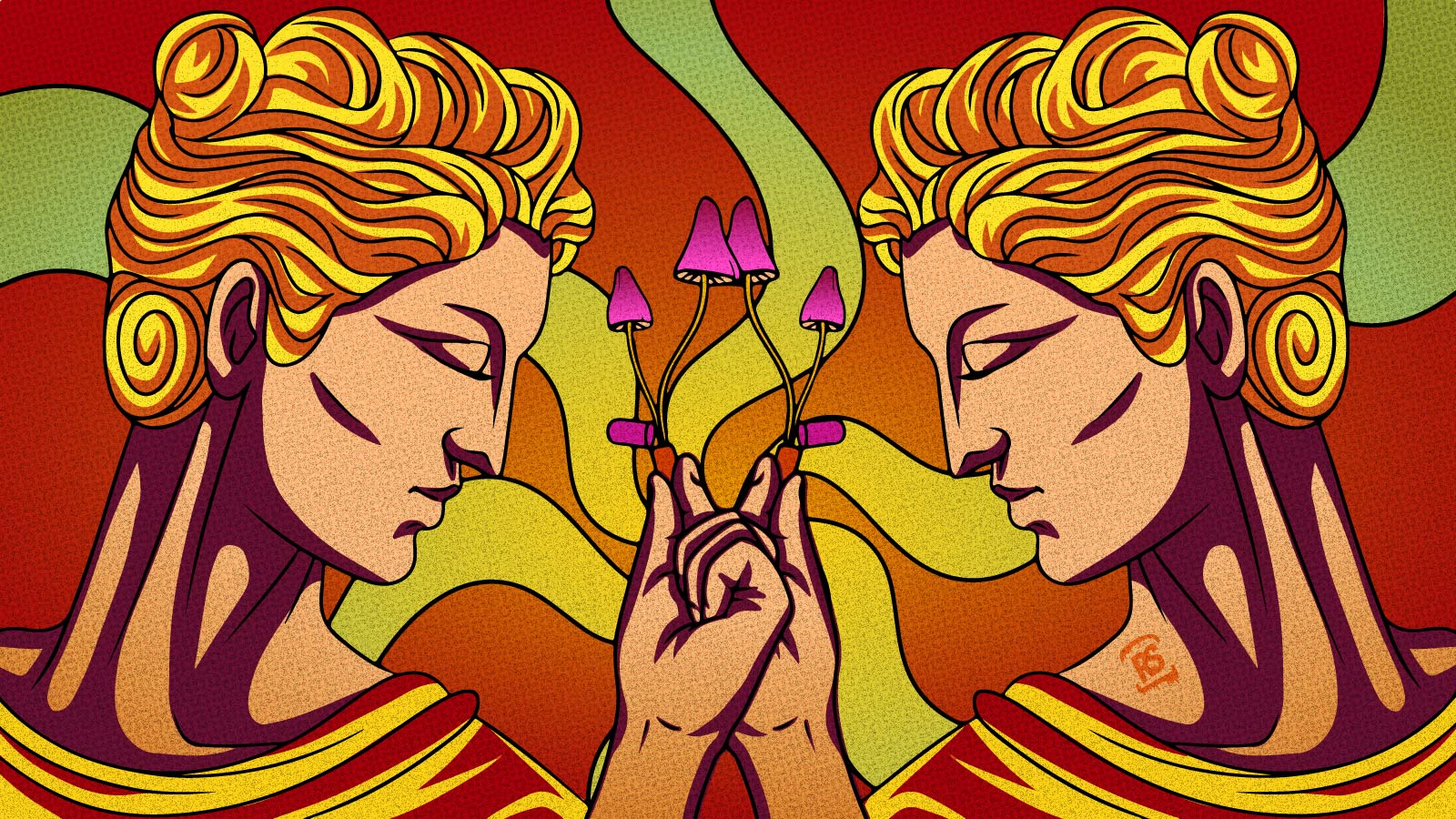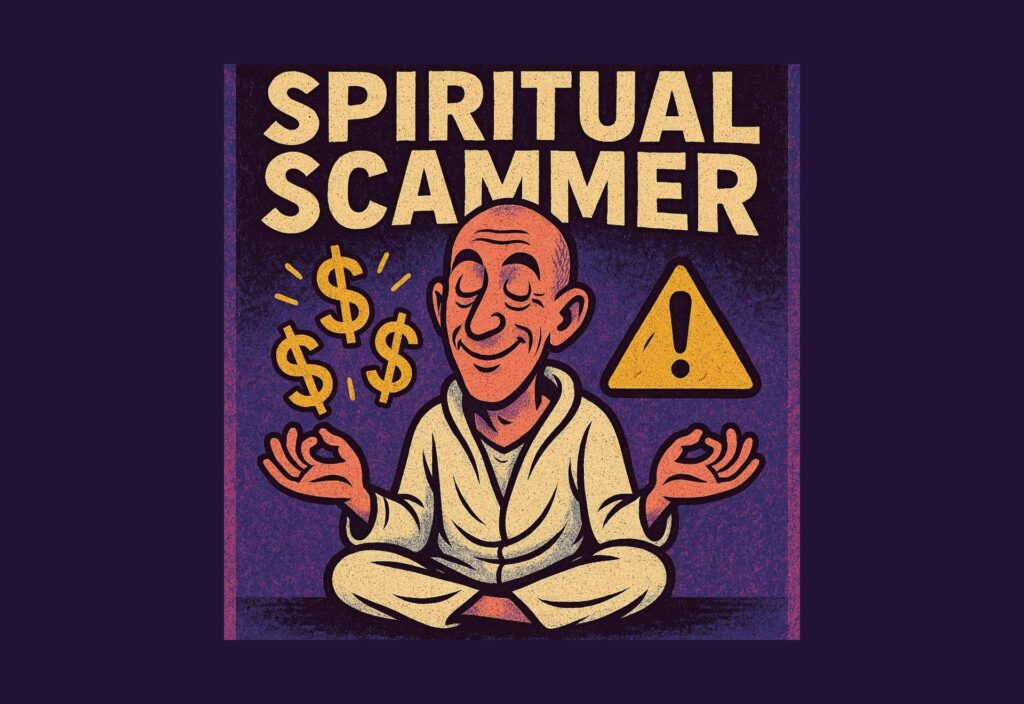You’ve probably heard about microdosing by now, and maybe you’re considering trying it yourself. You can microdose just about anything, but if you want to learn more about microdosing psilocybin, keep reading. In this guide, you’ll learn all about psilocybin mushrooms, how much is a microdose of shrooms, and why people choose to microdose. Plus, we’ll talk about some of the latest research on the benefits of microdosing mushrooms.
What Are Psilocybin Mushrooms?
Psilocybin mushrooms, also known as magic mushrooms, are psychoactive fungi. There are dozens of strains of psychedelic mushrooms, and they can have varying potencies. Eating psilocybin mushrooms can lead to altered senses, such as enhanced colors and distorted visuals, to full-blown hallucinations in larger doses. When taken in larger quantities, the effects can include a confused sense of reality, loss of coordination, and ego death. However, in smaller quantities, like microdoses, psilocybin mushrooms offer subtle – yet profound – therapeutic effects for many people.
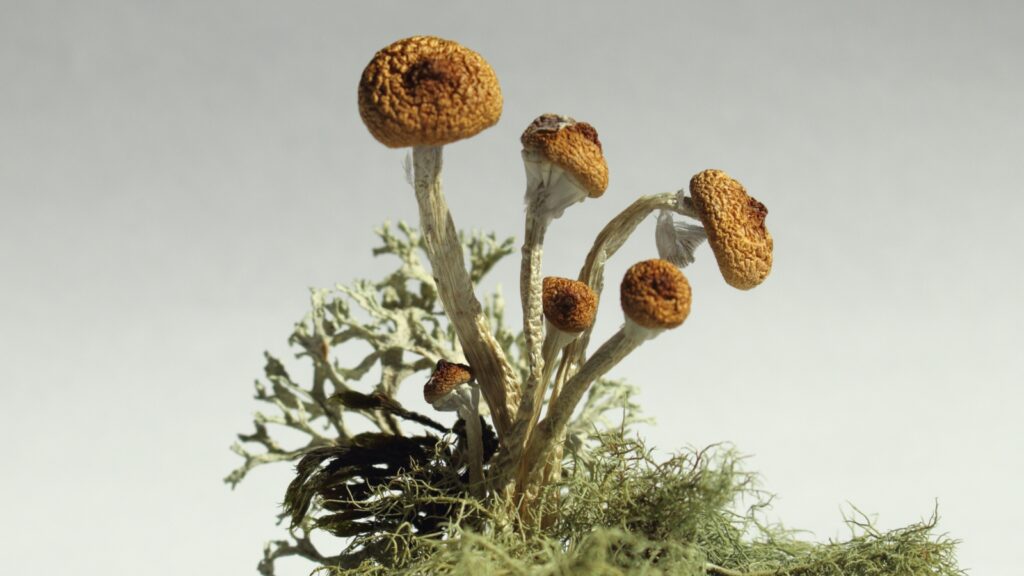
How Long Do Psilocybin Mushrooms Take To Kick In?
It usually takes about 30 minutes to digest psilocybin mushrooms and feel the effects. However, keep in mind that a microdose of mushrooms should not produce noticeable effects. Instead, the effects are sub-perceptual. They still work within your body, but you shouldn’t feel high or altered. Instead, people report an improved feeling of wellness or clarity. Some strains of mushrooms can provide an energizing boost.
What Are the Best Ways to Ingest Psilocybin Mushrooms?
Most of the time, people eat dried mushrooms. When microdosing mushrooms, capsules, or portioned chocolates is an easy way to obtain consistent doses. All you have to do is grind up the dried mushrooms with a coffee grinder or high-performance blender until they become powdered.
Using a capsule filling machine (or by hand), fill the capsules with the powdered mushrooms. You’ll need a small digital scale to tear the weight of the empty capsule so you can measure it against a filled capsule. This will help you keep the doses consistent for all caps.
If you don’t want to go the capsule route but still want to microdose mushrooms, consider brewing a mushroom tea or simply eating them dried. Some people dislike the bitter taste and chewy texture, so adding them to other foods can be helpful.
Some people have a hard time digesting mushrooms, and they can cause an upset stomach. To help combat this, you can try lemon tekking. This involves soaking the mushrooms in freshly squeezed lemon juice for ten minutes before eating them. The strong acidity of the lemon juice breaks down the cell wall, speeding up the time it takes to turn psilocin into psilocybin. Not only does it lighten the digestive load, but it helps the mushrooms kick in faster.
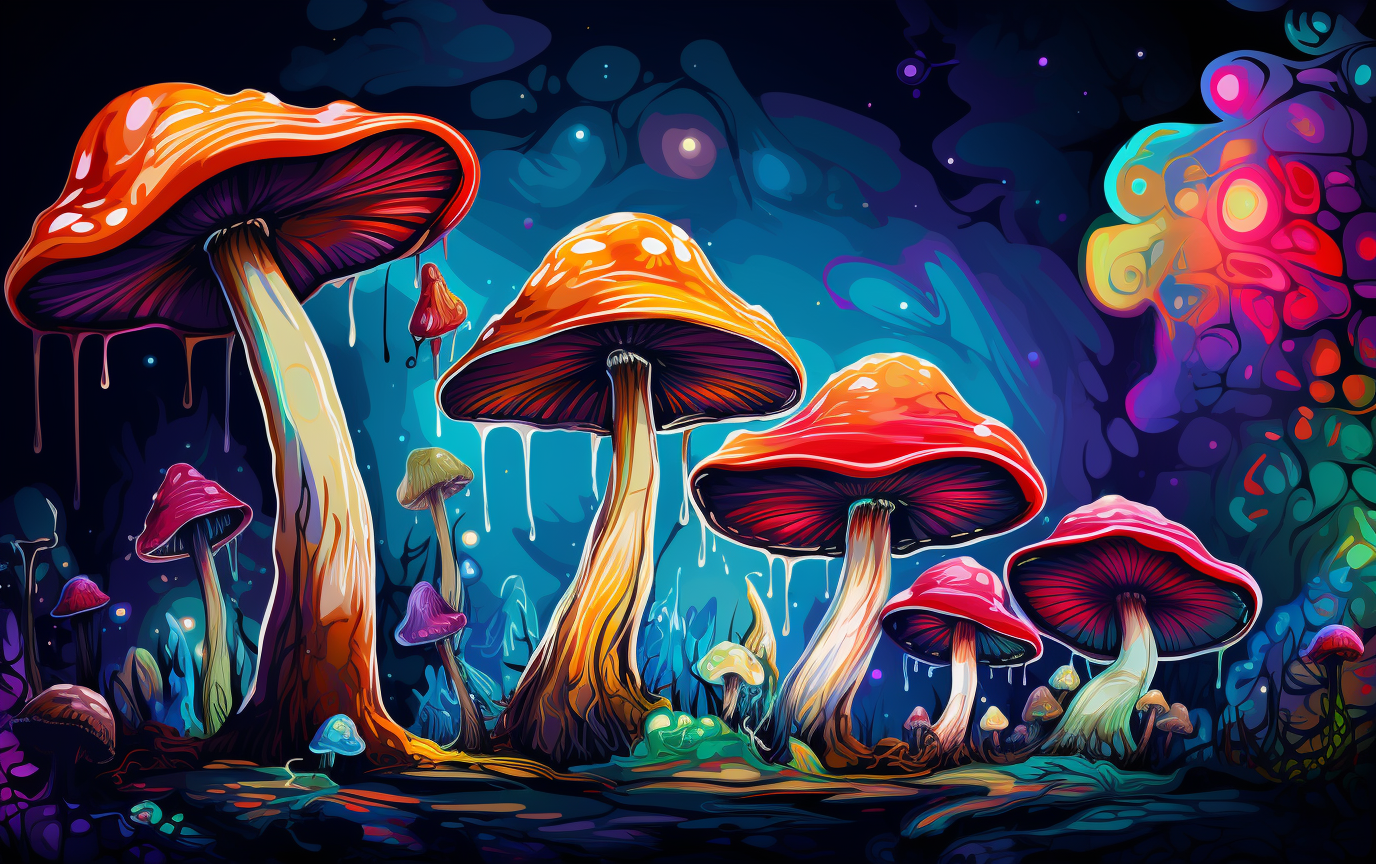
How Do You Dose Psychedelic Mushrooms?
Typically, psilocybin doses are measured in grams. The most common type of psilocybin mushroom is Psilocybe cubensis which contains approximately 0.6% psilocybin when dried. This means every gram of P. cubensis contains 6 mg of pure psilocybin.
Although there is no universal standard on psilocybin mushroom dosage, there are some guidelines that can be helpful when learning how to microdose shrooms. Remember to go at your own pace, and if you are sensitive to other substances, you might also be sensitive to psilocybin. The goal of microdosing mushrooms is not to get high, so less is often more in this case.
What Is a Microdose?
So, how much is a microdose of shrooms? A mushroom microdose is considered somewhere between 0.1-0.2 grams. That’s one-tenth to one-twentieth of a gram. Although, to account for folks with a naturally lower or higher tolerance, it’s safe to say a microdose of psilocybin may be 0.05 to 0.25 grams.
When first starting out, you might even want to start with 0.05 grams on the first day to make sure you don’t experience any uncomfortable effects. On your next dose, bump it up to 0.1, and see how you feel. This is a perfect dose for many people, yet others prefer more. Remember, the goal is to take a small yet substantial dose that doesn’t produce any physical side effects. If the walls start breathing, you’ve taken more than a microdose.
What Is a Macro Dose?
Beyond a microdose, there are varying degrees of doses that all go by different names. There is a mini dose, museum dose, moderate dose, mega dose, or macro dose. Sometimes referred to as a ‘heroic dose,’ a macro dose is five grams of mushrooms or more. Do not attempt to take this amount unless you are quite experienced with psilocybin and have a trip sitter with you the entire time.
A macro dose is entirely the opposite of a microdose, and your entire sense of self and the world around you may shift to an unrecognizable scene. Now, this might be incredible and breathtaking, or it may be extremely uncomfortable for many hours, resulting in a bad trip.
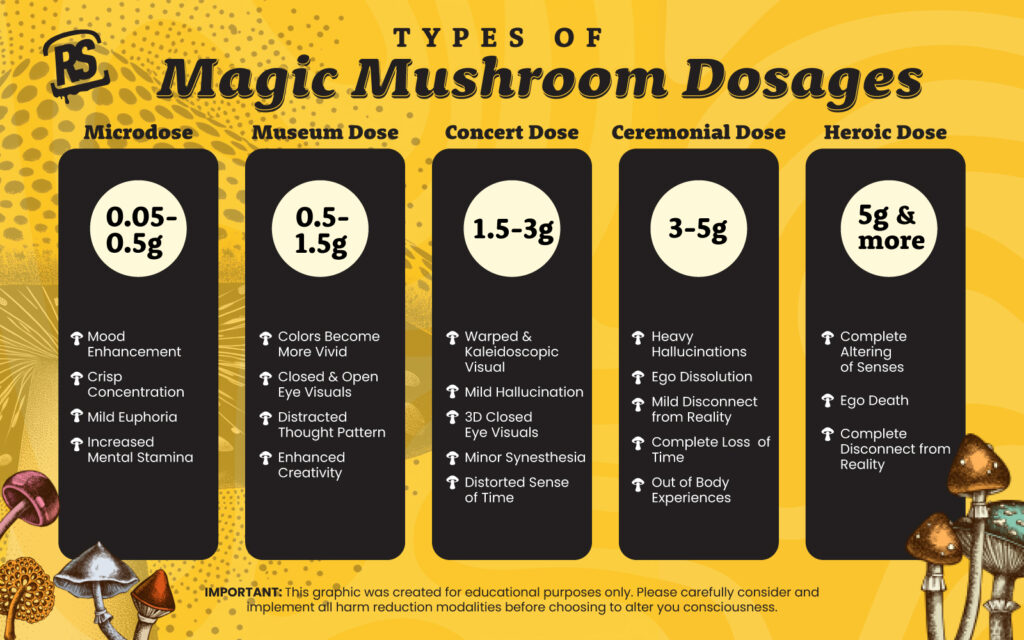
How to Microdose Shrooms
Before you start a microdosing protocol, decide what kind of schedule you’d like to follow. There is no one right way to microdose, but there are a few popular options. For example, taking your dose every third day is believed to prevent tolerance and provide the most long-term results. However, other proponents of microdosing suggest that there is no harm in taking a dose daily and pausing for 30 days after you’ve been microdosing for 90 days.
The brass tacks of it are that there is still not enough conclusive evidence that suggests exactly how to microdose shrooms. It’s a personal matter and one that should be decided on an individual level. Maybe you’d like to take them for two days, then break for one. Or, perhaps you only want to dose every other day. Tap into your intuition and determine the best path for you. You might find it helpful to keep a diary of your schedule and monitor your results over time.
Paul Stamets created a unique microdosing technique he calls “stacking.” It involves a combination of niacin, Lion’s Mane, and P. cubensis. This method combines approximately 0.1-1 gram of P. cubensis, 5-20 grams of Lion’s Mane, and 101-200 milligrams of niacin. His belief is that niacin enhances the effects of psilocybin while reducing the psychedelic experience.


What Are the Benefits of Microdosing Mushrooms?
Organizations like the John Hopkins Center for Psychedelic and Consciousness Research, and the Multidisciplinary Association for Psychedelic Studies (MAPS) are coming to similar conclusions in the early stages of their research. Psilocybin is gaining momentum as an option for patients with treatment-resistant depression. There is also significant evidence that veterans and others with post-traumatic stress disorder may find relief from symptoms with psilocybin mushrooms.
While these may be the cornerstone breakthroughs we’re looking for with psilocybin, there are plenty of other benefits that can improve our daily lives. Many people are finding relief from stress and anxiety and getting better sleep because their minds are less entrenched in circular, worrisome thoughts. Those microdosing mushrooms for a month or more report a greater ability to tackle complex problems. This is largely due to the enhanced creativity that lends a hand to divergent thinking.
Overall, anecdotal evidence largely returns to the overall mood and outlook improvement after microdosing. Although the dosage is minimal, it’s enough to make you feel better. And with continued usage, others are reporting ongoing improvements across other avenues of their lives as well.
The future of microdosing psilocybin mushrooms is on the verge of massive impact. Although cultivation is illegal right now, It won’t be long before this medicine is available to a larger audience, and the stigma behind magical fungi will be a thing of the past.
Common Effects when Microdosing Psilocybin
While individual experiences may vary, there are some commonly reported effects of microdosing psilocybin:
- Enhanced Mood and Well-being: Many individuals report an overall improvement in mood and a heightened sense of well-being. They often describe feeling more positive, optimistic, and emotionally stable.
- Increased Creativity and Productivity: Some users find that microdosing psilocybin can boost their creativity and productivity. It’s as if it helps them see problems from fresh perspectives, leading to more innovative thinking.
- Improved Focus and Concentration: Contrary to what one might expect, microdosing psilocybin doesn’t typically lead to distraction. Instead, users often report an improved ability to concentrate on tasks.
- Reduced Anxiety: Some individuals experience a decrease in anxiety levels when microdosing psilocybin. This may be particularly beneficial for those dealing with generalized anxiety or social anxiety.
- Enhanced Social Interaction: People have reported feeling more open, empathetic, and connected to others while microdosing. It can facilitate more meaningful and authentic social interactions.
- Heightened Sensory Perception: Some users report a subtle intensification of sensory experiences, such as colors appearing more vibrant or a heightened appreciation for music and nature.
- Improved Problem-Solving Skills: Microdosing psilocybin may enhance cognitive flexibility, making it easier to approach challenges with a more open-minded and adaptable mindset.
- Reduced Depressive Symptoms: While not a substitute for professional treatment, some individuals have reported a reduction in symptoms of depression when microdosing psilocybin. However, anyone struggling with depression should consult a healthcare professional.
- Greater Mindfulness and Presence: Many users describe an increased sense of mindfulness and a greater ability to be present in the moment, which can be particularly beneficial for practices like meditation.
- Potential for Enhanced Neuroplasticity: Some research suggests that psilocybin may promote neuroplasticity, which is the brain’s ability to adapt and form new connections. This could have long-term implications for learning and memory.
It’s important to note that while these effects are commonly reported, individual responses can vary. Additionally, the legality and regulations surrounding psilocybin use vary by location, so it’s crucial to research and follow local laws and consult with a healthcare professional if you have any concerns or pre-existing medical conditions.
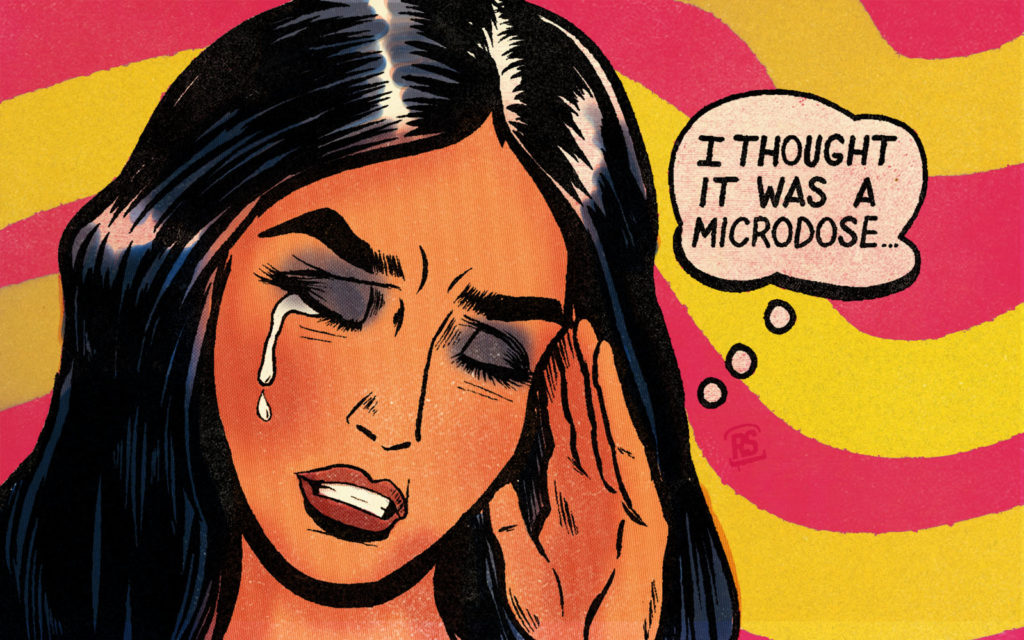
What the Community Says about Microdosing Psilocybin
The psychedelic community strongly believes microdosing psilocybin should be further studied for its potential therapeutic benefits. A wide range of reports exist, including anecdotal reports of individuals regularly microdosing with psilocybin.
One of these reports involved a person suffering from Bipolar II and PTSD looking for a solution to their seasonal depression. After trying a wide range of medications and therapies, they eventually tried microdosing psilocybin with a full understanding it could increase their levels of mania. They found taking 0.2 grams every fourth day highly increased mania, so they cut back the regularity and dosage to 0.15 grams every other week. This new schedule helped them better manage their seasonal depression, even going as far as stating, “It was the first winter I’ve ever had where I wasn’t depressed.” Another user suffering from depression reported that they “felt more capable, emotionally resilient, faster in mental/emotional recovery, and a much-improved ability to choose other actions.”
Yet, some folks look to microdosing psilocybin to enhance creative and divergent thinking in their daily lives. “I find that microdosing mushrooms helps me think through my problems instead of looking for ways to get around them,” says another user who likes to take 0.1 grams for three days on and four days off.
What to Know Before Microdosing Psilocybin
One of the most important aspects of microdosing psilocybin is ensuring a consistent dosage. Dosage refers to the dose of the substance as well as the time-frequency and duration that the doses are taken. A microdose is such a small amount that it is easy to accidentally consume a larger dose than expected. Psilocybin mushrooms make this even more difficult due to the varying strengths of the different species and individual mushrooms.
One example of this can be seen in the differences in potency between the cap and stem of psilocybin mushrooms. A study analyzing psilocybin mushrooms in Japan found that P. cubensis had a maximum potency of 1.27% in the stem and 1.35% in the cap. This study also showed whole mushrooms had a potency ranging from 0.37% to 1.30%.
How Psilocybin Works Inside the Body
Psilocybin is a serotonergic substance meaning it acts on the serotonin, or 5-hydroxytryptamine, receptors in the central and peripheral nervous system. The primary receptors it acts upon are the 5-HT2B and 5-HT2C receptors. It also activates the 5-HT2A receptors with slightly lower activity. The activity at these receptors causes an increased concentration of dopamine in the basal ganglia. This is responsible for the euphoric and psychedelic effects of psilocybin.
Small Doses
Small doses of psilocybin, referred to as a “microdose,” do not produce any acute effects but rather a psychological and social benefit from regularly consuming microdoses. These effects include increases in:
- Alleviated symptoms of depression and anxiety
- Enhanced productivity
- Improvements in overall well-being
- Enhancements in convergent and divergent thinking
Large Doses
When consumed in large doses, psilocybin produces a profound psychedelic effect involving:
- Closed and open-eye visuals
- Dilated pupils
- Reduced appetite
- Euphoria
- Heightened emotions
- An altered sense of reality
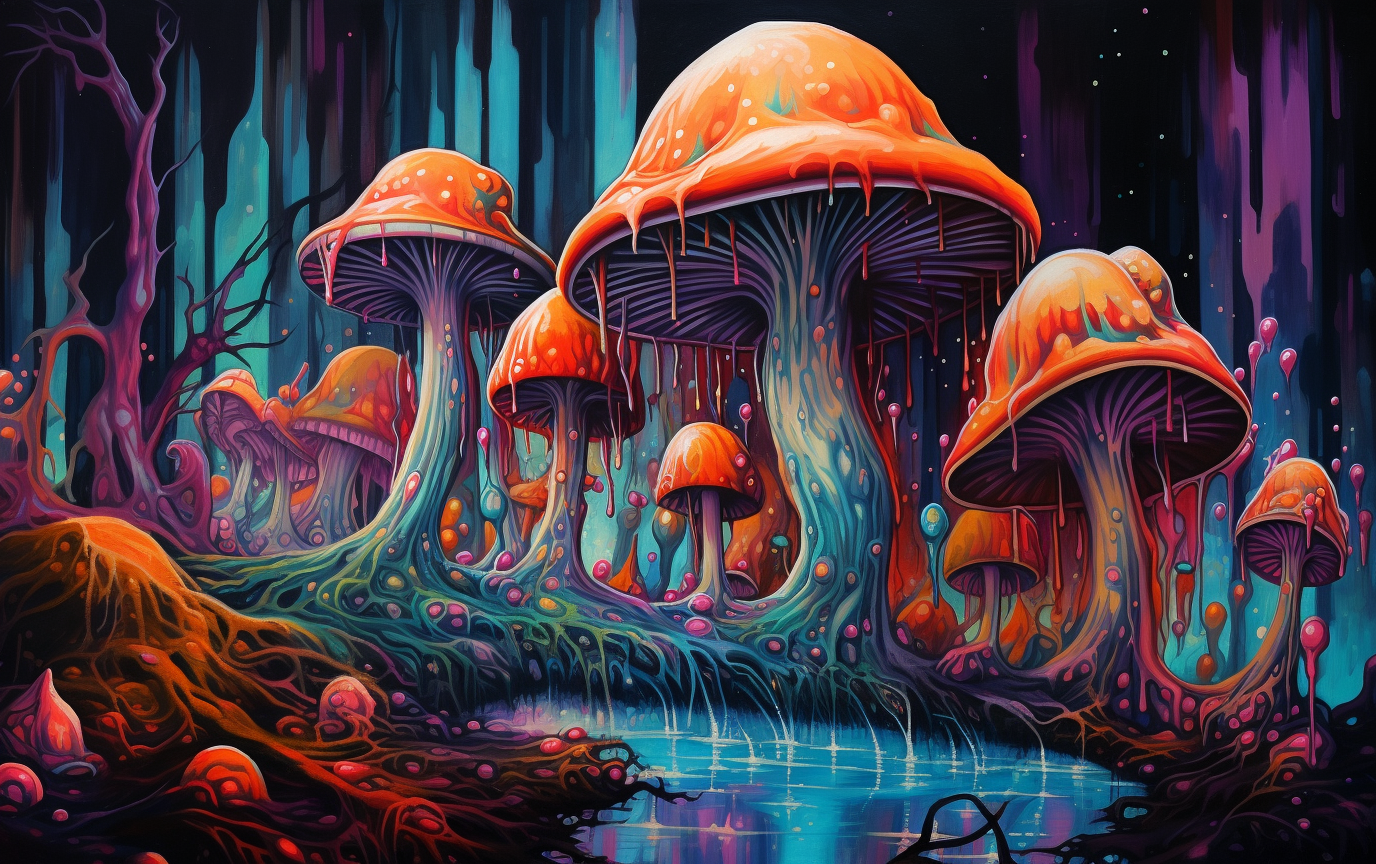
Common Interactions When Microdosing Psilocybin
Psilocybin, along with most other psychedelics, causes vasoconstriction. This means mixing it with other vasoconstrictors can cause unpleasant and potentially dangerous effects. Mixing psilocybin with any MAOIs can enhance its potency, which could cause a microdose to produce stronger effects than expected. Alcohol mixed with psilocybin mushrooms can place unnecessary stress on the liver since they are both metabolized by it.
Safety Concerns
The primary safety concern with microdosing psilocybin is alterations in heart rate. Using psilocybin with a pre-existing heart condition can cause tachycardia or bradycardia.
Are Psilocybin Mushrooms Legal?
Psilocybin is a controlled substance in most of the modern world.
In some places, they are classified as illegal substances, while in others, there are exceptions or decriminalization measures in effect.
For instance, in some countries like Brazil, Jamaica, Portugal, and the Netherlands, psilocybin mushrooms are either decriminalized or tolerated to some extent. In these places, there might be legal loopholes, religious exemptions, or specific regulations allowing their use.
In certain regions of the United States, such as Oregon, and some cities like Denver, Colorado, and Oakland and Santa Cruz in California, there have been initiatives to decriminalize or regulate the use of psilocybin. This often involves measures like allowing supervised medical use or making enforcement of psilocybin-related offenses a low priority.
However, it’s crucial to remember that even in places where there have been reforms or decriminalization efforts, specific laws and regulations can be complex and subject to change. Always check your local and national laws, and if you have any uncertainties or legal concerns, it’s best to consult with a legal professional who is well-versed in your jurisdiction’s drug laws.
